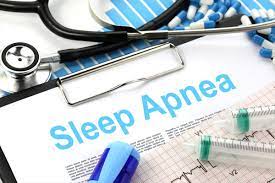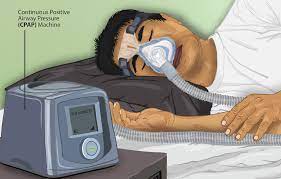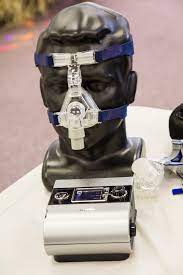How Is Sleep Apnea Diagnosed And Treated
Video Link: https://vimeo.com/187730092
Video Download: How Is Sleep Apnea Diagnosed And Treated
Video Stream: How Is Sleep Apnea Diagnosed And Treated
How Is Sleep Apnea Identified and How Is It Treated?
Because Sleep Apnea cannot be diagnosed in the context of a routine medical visit, it requires a specific protocol to be effectively diagnosed. An effective way to establish to one's physician that you may be suffering from sleep apnea is to keep a sleep diary for fourteen days before your appointment. You can use this diary as evidence that your sleeping habits are being disrupted, which may prompt your physician to set you up with an appointment with a sleep specialist.
Also, be open with your doctor about your energy levels and how your sleeping issues impact your quality of life. It's also important to share your personal and family medical history to further prove your deficiency.
Sleep Apnea Physical
Further evidence of sleep apnea can be evaluated via physical examination. Your doctor can look into your throat, nose, and mouth to identify the  presence of tissue that may impede the ability to breathe easily during the night. For example, many adult Sleep Apnea patients have a soft palate or uvula, which is more significant than average and restricts airways during sleep.
presence of tissue that may impede the ability to breathe easily during the night. For example, many adult Sleep Apnea patients have a soft palate or uvula, which is more significant than average and restricts airways during sleep.
If your physician considers you a potential sleep apnea sufferer, he or she will likely recommend you visit a sleep specialist. There are many tests that can accurately diagnose sleep apnea, but these tests require you to have an opportunity to be monitored for sleeping comfortably.
Polysomnogram for Sleep Apnea Diagnosis
The most frequently used test for sleep apnea is known as a Polysomnogram. This test uses various diagnostic devices to evaluate blood pressure, heart rate, eye movement, and brain activity during sleep. This test also measures other factors, including the rise and fall of your chest, snoring, the rate at which air flows in and out of your nose, and oxygen levels in your bloodstream.
As you can imagine, this test is pretty elaborate, so it generally requires that you visit a specifically designed sleep laboratory or sleep center. There is no pain involved with the procedure, and it's no different than a regular night's sleep, except, of course, you will be fitted with several sensors attached to your finger, limbs, chest, face, and scalp.
These devices will help your sleep specialist provide you with an informed diagnosis about your sleep apnea, which will help him or her provides you with the most effective form of treatment to meet your needs.
CPAP Sleep Apnea Treatment
The most effective method to treat Sleep Apnea is known as a CPAP or Continuous Positive Airway Pressure device. This works exactly how it sounds. It enhances the airflow through your nose and throat, widening your airway and helping you sleep more soundly through the night. The elaborate testing during your sleep study will help your physician correctly calibrate the CPAP to meet your body's needs at rest.
There are also tests that can be administered at your home to provide diagnostic data regarding your sleeping pattern. The most commonly used device is known as a Home-Based Portable Monitor.
Of course, this device will not provide the same depth of results as a Polysomnogram, but it can provide valuable data at a cheaper cost. In particular, the home monitor measures the rise and fall of the chest, heart rate, air circulation, and blood-oxygen levels. This test is often used as a preliminary examination for patients to see if they need a sleep study.
What Are Sleep Apnea Treatment Options
Several options are available to sleep apnea patients, dependent upon the severity and source of their apnea. These options include breathing devices, mouthpieces, changes in lifestyle, and surgery. Obstructive sleep apnea is generally not treated with medication.
What Are the Goals of Sleep Apnea Treatment?
Reduce Fatigue
Stop Snoring
Make It Easier to Breath During Sleep
Because sleep apnea is commonly associated with other conditions such as hypertension and obesity, Sleep Apnea treatment is often combined with other forms of treatment to relieve these related medical conditions.
It is important to treat sleep apnea because in doing so, you can reduce the risk of various related medical conditions, especially those related to the heart and cardiovascular system, including stroke and heart attack.
The treatment that will work best for you depends on your medical condition and personal preferences, and your sleep specialist will help you pick th e ideal treatment option to meet your needs.
e ideal treatment option to meet your needs.
For patients with mild sleep apnea, the best form of treatment may simply be a mouthpiece combined with lifestyle changes. On the other hand, patients that experience more severe sleep apnea will likely be most effectively treated with a CPAP or surgery.
In some cases, your issues with daytime fatigue may come from sources other than Sleep Apnea, and if your Apnea Therapy isn't providing you the results you need, it's likely that you aren't allowing yourself adequate rest. You need seven to eight hours to become fully rested, and some patients actually need more.
If the combination of sleep and medical treatment isn't practical, you and your sleep specialist will have to explore other potential options.
Adopting Healthier Habits to Encourage Better Sleep
For patients with light sleep apnea, you may recover from your condition simply by altering your habits and lifestyle to improve your sleep.
If you suffer from a stuffy nose due to allergies or other conditions, use medications or nasal sprays to improve your condition
Make the effort to sleep on your side. Obstructive Sleep Apnea is most commonly an issue when a patient sleeps on his or her back. There are shirts and pillows that can inhibit back-sleeping and help alter your habits.
If you are overweight, try to lose weight and reach a healthier weight. Soft tissue can inhibit airways, making it harder to breathe during sleep.
Don't take medications that cause you to become sleepy, and limit your use of alcohol entirely if necessary. Depressants cause your airway to become more restricted because the muscles relax.
If you are a tobacco user, stop smoking.
For some patients, a simple device known as an oral appliance can mitigate the effects of sleep apnea. It can also be used for snorers.
Regarding mouthpieces, you can visit an orthodontist or dentist who can build you a mouthpiece explicitly designed for your mouth to increase airflow. This mouthpiece will open your mouth very slightly, preventing your tongue and jaw from getting in the way of your breathing.
Breathing Devices for Sleep Apnea
Medical devices promote the airflow by actively circulating air and keeping the airway open for patients with more troublesome sleep apnea. The most prescribed treatment for more severe sleep apnea is the CPAP. There are two types of CPAP. The most common device utilizes a mask that covers your nose and mouth, but some devices just introduce airflow through the nose. This product provides a slow and steady stream that delivers air to the throat. In doing so, it makes it easier to breathe.
Recognizing that snoring and sleep apnea are related but not identical health conditions is essential. Just because you are no longer snoring doesn't mean that you no longer need your CPAP or have been cured of your condition. Sleep Apnea is chronic, and moderate to severe sleep apnea will return if you suspend treatment.
Under most circumstances, a professional will visit your home to prepare the CPAP for use, dependent upon the recommendation of your physician. It's  also important to recognize that your condition may change over time, necessitating changing your CPAP settings periodically to improve airflow. Of course, this should only be done by your sleep doctor.
also important to recognize that your condition may change over time, necessitating changing your CPAP settings periodically to improve airflow. Of course, this should only be done by your sleep doctor.
Some people experience side effects as a result of using a CPAP. Most common side effects include headache, dry mouth, skin irritation, and stuffy or dry nasal passages. Also, if the CPAP isn't programmed correctly, it can lead to stomach discomfort and bloating.
For the most part, these side effects can be easily treated, helping you to get the most out of your CPAP device. It's essential to be open with your sleep doctor and the tech that comes to your home to ensure your CPAP treatment is optimal.
For patients that experience issues with runny or dry nasal passages, there are ways to increase the moisture content of the air to improve response. Also, you may benefit from choosing a mask that fits your face more securely.
Most patients who use CPAP find that the device improves their sleep quality and energy levels and are satisfied with the treatment.
Sleep Apnea Surgery
In significant cases of Sleep Apnea, the patient may benefit most from surgery. The form of surgery required depends on the specific cause of Obstructive Sleep Apnea. In general, the goal of Sleep Apnea Surgery is simply to open airways more securely. This can be done by removing, stiffening, or shrinking soft tissue in the throat and mouth and can also be accomplished by adjusting the jaws to increase airflow.
Soft tissue surgery can be done either as an outpatient procedure or at a hospital. If the goal is simply to shrink soft tissue, it may simply require an injection or other form of treatment rather than surgery. If the goal is to increase the thickness of the tissue, the surgeon may make a small incision and place a bit of sterile, hard plastic into the tissue.
If the goal of the surgery is strictly tissue removal, this form of treatment will only be provided at a hospital, and you will require anesthesia. After treatment, there is a chance that you will experience pain in the throat for seven to fourteen days. Finally, pediatric patients may benefit from tonsil removal, which is a common and standard surgery.
- 0001 Xylitol is a Natural, Plant-Sourced and Low-Calorie Sweetener [Last Updated On: January 8th, 2025] [Originally Added On: January 12th, 2021]
- 0002 The Secret Behind Keeping the Weight Off for Good -- No More Losing and Gaining Cycles! [Last Updated On: January 17th, 2025] [Originally Added On: January 13th, 2021]
- 0003 The Cognitive Benefits of Starting a CoQ10 (Coenzyme Q10) Supplement Regimen [Last Updated On: January 12th, 2025] [Originally Added On: January 14th, 2021]
- 0004 It's Time to Understand Why Vitamin C is Critical for Our Health and Longevity! [Last Updated On: January 10th, 2025] [Originally Added On: January 15th, 2021]
- 0005 Snoring is the Most Common Early Symptom of Sleep Apnea -- Do You Suffer From It? [Last Updated On: January 11th, 2025] [Originally Added On: January 16th, 2021]
- 0006 Vitamin-d Longevity Vitamin [Last Updated On: January 2nd, 2025] [Originally Added On: January 17th, 2021]
- 0007 Twenty Simple Weight Loss Tips That Can Change Your Life [Last Updated On: November 14th, 2025] [Originally Added On: January 18th, 2021]
- 0008 Twelve Ways To Control Cravings [Last Updated On: February 22nd, 2025] [Originally Added On: January 19th, 2021]
- 0009 The Truth About The Zone Diet [Last Updated On: November 13th, 2025] [Originally Added On: January 20th, 2021]
- 0010 The Truth About The Schwarzbein Principle [Last Updated On: November 12th, 2025] [Originally Added On: January 21st, 2021]
- 0011 The Truth About The Realage Diet [Last Updated On: November 11th, 2025] [Originally Added On: January 22nd, 2021]
- 0012 The Truth About The Origin Diet [Last Updated On: November 10th, 2025] [Originally Added On: January 23rd, 2021]
- 0013 The Truth About The Eat Right, Live Longer Diet -- Nourishing Food Equals Increased Longevity [Last Updated On: January 31st, 2025] [Originally Added On: January 24th, 2021]
- 0014 The Essential Roles Magnesium Plays For Our Energy Levels, Skin Youthfulness and Mental Health [Last Updated On: January 4th, 2025] [Originally Added On: January 25th, 2021]
- 0015 The Real Skinny On Vitamin B12. What It Can And Cannot Do For You [Last Updated On: March 23rd, 2025] [Originally Added On: January 26th, 2021]
- 0016 The Importance And Purpose Of Stress [Last Updated On: February 18th, 2025] [Originally Added On: January 27th, 2021]
- 0017 The Ideal Balanced Diet The Reality Of Healthy Eating [Last Updated On: November 9th, 2025] [Originally Added On: January 28th, 2021]
- 0018 The Effects Of Cortisol On The Body [Last Updated On: April 27th, 2025] [Originally Added On: January 29th, 2021]
- 0019 Sixteen Common Foods That Increase The Cancer Risk [Last Updated On: November 8th, 2025] [Originally Added On: January 30th, 2021]
- 0020 Should You Consider Intermittent Fasting? [Last Updated On: October 19th, 2025] [Originally Added On: January 31st, 2021]
- 0021 Can Caloric Restriction Help You Lose Weight And Live Longer? [Last Updated On: October 18th, 2025] [Originally Added On: February 1st, 2021]
- 0022 How Does Poor Sleep Rob Vitality And Health? [Last Updated On: October 17th, 2025] [Originally Added On: February 2nd, 2021]
- 0023 Nine More Natural Ways To Relieve Anxiety [Last Updated On: October 16th, 2025] [Originally Added On: February 3rd, 2021]
- 0024 Metabolism Boosting Tips For Losing Weight And Feeling Great [Last Updated On: October 13th, 2025] [Originally Added On: February 4th, 2021]
- 0025 Juicing Pros And Cons [Last Updated On: March 22nd, 2025] [Originally Added On: February 5th, 2021]
- 0026 Insomnia Guide [Last Updated On: October 12th, 2025] [Originally Added On: February 6th, 2021]
- 0027 How To Lose Weight With Human Growth Hormone [Last Updated On: October 11th, 2025] [Originally Added On: February 7th, 2021]
- 0028 How Safe Is Monosodium Glutamate AKA Msg? [Last Updated On: October 14th, 2025] [Originally Added On: February 8th, 2021]
- 0029 Hidden Sources Of Sugar In Common Foods [Last Updated On: October 8th, 2025] [Originally Added On: February 10th, 2021]
- 0030 How Would You Like to Potentially Add 14 Healthy and Youthful Years to Your Life Span? [Last Updated On: October 10th, 2025] [Originally Added On: February 11th, 2021]
- 0031 Four Reasons Why Healthy Sleep Encourages Weight Loss [Last Updated On: October 7th, 2025] [Originally Added On: February 12th, 2021]
- 0032 Omega-3 Fatty Acid Facts And How They Relate To Hormone Replacement Therapy [Last Updated On: April 24th, 2025] [Originally Added On: February 14th, 2021]
- 0033 Drink Right To Live Well [Last Updated On: October 6th, 2025] [Originally Added On: February 15th, 2021]
- 0034 Consumers Of Processed Meat Put Themselves At Risk [Last Updated On: October 5th, 2025] [Originally Added On: February 16th, 2021]
- 0035 Comparing The Same Mass Of Muscle And Fat [Last Updated On: February 19th, 2025] [Originally Added On: February 17th, 2021]
- 0036 Watermelon Health Food? The Benefits Of L-citrulline And Watermelon [Last Updated On: October 4th, 2025] [Originally Added On: February 18th, 2021]
- 0037 Alcohol Appears To Impact Sperm Quality [Last Updated On: October 3rd, 2025] [Originally Added On: February 19th, 2021]
- 0038 The Benefits of Selenium - Should You Take a Selenium Supplement? [Last Updated On: February 9th, 2025] [Originally Added On: April 8th, 2021]
- 0039 Selenium and its Impact on Your Health and Hormones [Last Updated On: March 3rd, 2025] [Originally Added On: April 8th, 2021]
- 0040 Scientifically Proven Benefits Of Turmeric The Indian Spice [Last Updated On: March 18th, 2025] [Originally Added On: April 27th, 2021]
- 0041 Natural Remedies for Heartburn or Acid Reflux [Last Updated On: February 18th, 2025] [Originally Added On: May 22nd, 2021]
- 0042 What the Heck Is a Raisin, Anyway and Why Would I Want to Eat One? [Last Updated On: May 18th, 2025] [Originally Added On: June 10th, 2021]
- 0043 Fat-Focused Diet May Help Boost Testosterone [Last Updated On: February 17th, 2025] [Originally Added On: June 10th, 2021]
- 0044 Chia Seeds: More Than Just a Fad [Last Updated On: April 11th, 2025] [Originally Added On: June 24th, 2021]
- 0045 Intermittent Fasting Boosts Growth Hormone, and Improves Cognitive Health [Last Updated On: March 4th, 2025] [Originally Added On: May 2nd, 2022]
- 0046 Growth Hormone, Nutrition, and Diet Affect Longevity [Last Updated On: February 14th, 2025] [Originally Added On: May 6th, 2022]
- 0047 How Your Health is Affected by Brown and White Fat [Last Updated On: February 14th, 2025] [Originally Added On: May 17th, 2022]
- 0048 Tesamorelin Boosts HGH Levels and Burns Belly Fat [Last Updated On: February 14th, 2025] [Originally Added On: May 21st, 2022]
- 0049 Build Muscle With Tofu - Don't Fear Soy [Last Updated On: November 7th, 2025] [Originally Added On: July 12th, 2022]
- 0050 Balancing HGH Levels with Weekly Sogroya [Last Updated On: November 5th, 2025] [Originally Added On: September 1st, 2022]
- 0051 Pecans Are Amazing [Last Updated On: February 19th, 2025] [Originally Added On: November 22nd, 2022]
- 0052 The Benefits of Fenugreek [Last Updated On: September 5th, 2025] [Originally Added On: November 24th, 2022]
- 0053 The Foods To Eat To Increase Stem Cells [Last Updated On: March 6th, 2025] [Originally Added On: December 7th, 2022]
- 0054 The Versatility of Pecans [Last Updated On: February 19th, 2025] [Originally Added On: February 9th, 2025]
- 0055 Understanding The Concept: A Pound Of Muscle Vs. A Pound Of Fat [Last Updated On: February 19th, 2025] [Originally Added On: February 11th, 2025]
- 0056 The Aging Enigma: Unravelling the Web of Human Growth Hormone Decline [Last Updated On: February 17th, 2025] [Originally Added On: February 12th, 2025]
- 0057 Rekindling the Flame: How a Fat-Friendly Diet Can Ignite Testosterone Levels [Last Updated On: February 14th, 2025] [Originally Added On: February 13th, 2025]
- 0058 Unlocking Your Inner Fountain of Youth: The Magic Elixir of HGH Injections for Women [Last Updated On: February 17th, 2025] [Originally Added On: February 14th, 2025]
- 0059 Effective Strategies for Controlling Cravings [Last Updated On: February 17th, 2025] [Originally Added On: February 17th, 2025]
- 0060 Overview of Hormone Replacement Therapy and the Role of Intermittent Fasting [Last Updated On: February 22nd, 2025] [Originally Added On: February 22nd, 2025]
- 0061 Understanding the Power of Stem Cells [Last Updated On: February 24th, 2025] [Originally Added On: February 24th, 2025]
- 0062 The Role of Selenium in Health and Hormones [Last Updated On: February 26th, 2025] [Originally Added On: February 26th, 2025]
Word Count: 1629






